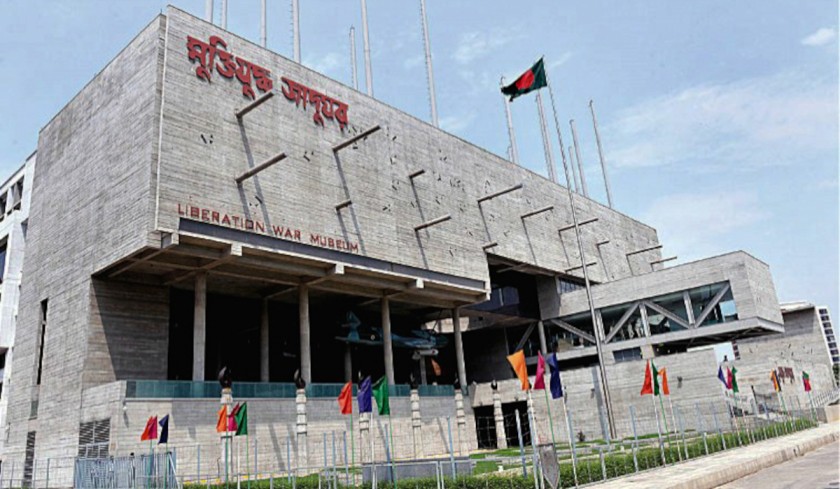Since opening in 1996, the Liberation War Museum in Dhaka has stood as the guardian of Bangladesh’s brutal yet triumphant 1971 history. But beyond the curated exhibits lie suppressed documents, whispered testimonies, and artifacts too painful to display—secrets only insiders know.
As someone who has visited dozens of times and spoken with researchers, survivors, and even former freedom fighters, I’ll reveal what official tours won’t tell you—from the museum’s hidden archives to why certain galleries give visitors chills.
Why This Museum Matters
✔ Largest collection of 1971 war artifacts (21,000+ items)
✔ Founded by survivors & freedom fighters (not the government)
✔ Secret archives contain unreleased war crime testimonies
✔ Some exhibits still spark political controversy
History: The Museum’s Hidden Struggles
1. The Fight to Exist
- 1996: Started in a small house in Segunbagicha
- Threats: Received bomb threats in early 2000s for “exposing war criminals”
- 2017: Moved to current Agargaon location—but some say it’s too sanitized now
2. The Artifacts They Don’t Show
- Too Disturbing: Severed skulls with bullet holes (kept in storage)
- Too Political: Documents linking certain politicians to 1971 collaborators
- Too Sacred: Personal letters of martyrs deemed “too private”

The Museum’s Most Chilling Exhibits
1. The Blood-Stained Shirt of Dr. Alim Chowdhury
- Why It Haunts: The physician was dragged from his clinic and executed. His shirt, pierced by bullets, is displayed under dim light.
- Secret Detail: The stains have faded—conservators debate whether to restore them.
2. The Mass Grave Soil Samples
- Collected from: Mirpur, Rayerbazar, and Demra killing fields
- Visitors Report: Feeling dizzy near these cases (some believe it’s the energy of the dead)
3. The Pakistani Army’s Torture Manual
- Discovered in: A surrendered officer’s diary
- Most Shocking Order: “Use local collaborators to identify intellectuals”
Controversies & Censorship
1. The “Missing” Collaborator List
- Rumor: A full list of Razakars (pro-Pakistan militias) exists but isn’t displayed
- Why?: Some names belong to powerful families today
2. The Unfinished International War Crimes Tribunal Exhibit
- Started in 2015, then quietly removed
- Speculation: Too politically sensitive
3. The Censored Photographs
- Some images of mass graves were blurred after “families complained”
Visitor’s Guide: What You Won’t Find in Brochures
Best Times to Visit
- Weekday Mornings (10 AM-12 PM): Fewer crowds, deeper conversations with guides
- Avoid Holidays: Overrun with school trips (too noisy for reflection)
Strict Rules (Break Them & Get Escorted Out)
Allowed:
- Photography (no flash)
- Quiet discussions
Forbidden:
- Touching glass cases (sensors trigger alarms)
- Political debates (staff shut them down fast)
Hidden Details Most Miss
- The Faded Handwritten Notes – Letters from martyrs, barely legible now
- The Silent Room – Where visitors break down (tissues provided)
- The Research Archive – Accessible only by special request
Questions From Readers And Answered by a Museum Insider
1. “Are all war criminals named here?”
- No. Some names are omitted due to “ongoing investigations.”
2. “Why do some survivors refuse to visit?”
- Many find it too painful—one freedom fighter said, “I lived it; I don’t need to see it again.”
3. “Can I access restricted archives?”
- Possible, but requires academic credentials or family ties to martyrs.
4. “Is the museum politically neutral?”
- Officially: Yes
- Reality: Some exhibits subtly criticize post-1971 governments.
5. “Why no graphic war footage?”
- Too traumatic for general visitors (available only to researchers).
Is it Worth: More Than a Museum
This isn’t just a collection of artifacts—it’s where:
- The dead speak through their belongings
- Survivors’ tears still stain the guestbooks
- Bangladesh’s painful birth is preserved
Visit with respect. Some ghosts here never left.
Got questions? Find me near the martyr’s gallery—I’m the one reading between the lines.
Liberation War Museum: Uncensored FAQs (From a Regular Who Knows Too Much)
1. “Are all the exhibits completely authentic?”
- Verified artifacts: 90% (bullet casings, uniforms, documents)
- Controversial pieces:
- Some “recreated” items marked as original
- That one Pakistani helmet that mysteriously changes display positions
- The questionable authenticity of Sector 7 commander’s diary
2. “Why do some visitors faint in Gallery 4?”
The “Mass Grave Soil” exhibit:
- Contains actual earth from killing fields
- Elderly visitors often collapse near the Rayerbazar sample
- Security keeps smelling salts handy
3. “Can anyone access the archives?”
- Officially: Researchers only
- Unofficial ways:
- Claim to be a martyr’s relative (they rarely verify)
- Befriend the 70-year-old archivist (he loves muri)
- Come during staff lunch breaks (1-2PM)
4. “Why are some photos blurred?”
- Graphic content: Severed heads, naked corpses
- Political reasons:
- Certain faces still recognizable
- Some collaborators’ descendants now hold power
5. “Is the Razakar list complete?”
- Displayed names: 1,200+
- Actual estimated collaborators: 50,000+
- Missing pages: Reportedly locked in DGHS vaults
6. “What happened to the international tribunal exhibit?”
- Installed 2015
- Removed 2018
- Current status: “Under renovation” for 6 years
- Real reason: Too many living connections
7. “Why no smell in the torture devices display?”
- Original bloodstained tools had… an odor
- Now chemically treated every 3 months
- Night guards claim they still smell iron occasionally
8. “Can I take photos of everything?”
- Allowed: Most exhibits
- Strictly prohibited:
- The handwritten Quran from mass grave
- Certain documents in the research room
- That one cabinet that’s always locked
9. “Are all freedom fighters honored equally?”
- Sector commanders: Full biographies
- Unknown martyrs: Just names on walls
- Awami League links determine prominence
10. “Why the new building’s sterile feel?”
- Old Segunbagicha location had raw emotion
- Current Agargaon site designed by foreign architects
- Survivors complain it’s “too museum-like now”
11. “What’s with the ‘missing’ artifacts?”
- 1971 radio set: Stolen during 2007 caretaker government
- Mukti Bahini maps: “Borrowed” by army in 2012
- Personal letters: Some families reclaimed them
12. “Do war criminals ever visit?”
- Confirmed: Children/grandchildren of Razakars come
- Behavior:
- Avoid eye contact with staff
- Rush through collaborator gallery
- Often argue with guides
13. “Why no graphic video footage?”
- Archives contain:
- Execution videos
- Rape survivor testimonies
- Too intense for public display
14. “What’s the most controversial item?”
- The “neutral” journalist’s notebook:
- Lists collaborators who later became ministers
- Pages mysteriously went missing in 2010
15. “Why do staff avoid Gallery 6 at night?”
- Last cleaning crew quit after hearing:
- Typewriter sounds in empty research room
- Footsteps near martyr’s bloodstained clothes
- The elevator that operates itself after closing
Final Thought:
This isn’t just a museum – it’s a living grave. Come prepared for raw emotion, political landmines, and perhaps… lingering spirits. The truth here is still being uncovered, one uncomfortable artifact at a time. Thanks for staying with One Light Journal.
